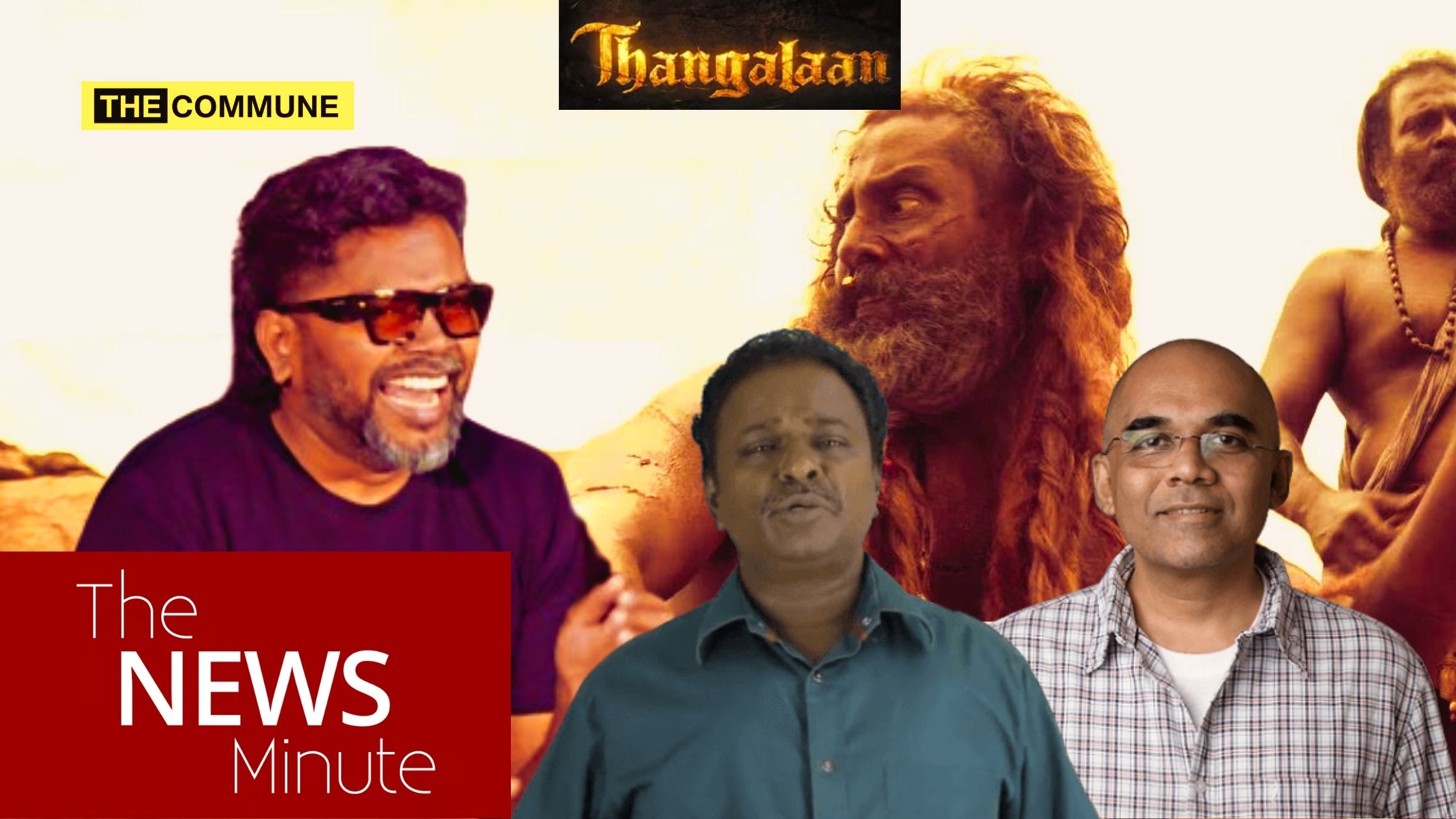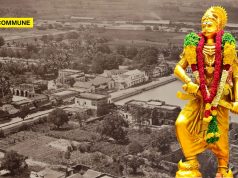
Pa. Ranjith-directed “Thangalaan” is a clear example of how an impressive cast cannot salvage a film with a superficial and overplayed storyline. The film received praise only from the leftist mouthpiece The News Minute (TNM), even as noted reviewers like “Blue Sattai” Maaran and Baradwaj Rangan slammed it for its lacklustre storytelling, overbearing ideological messaging, and desperate reliance on the success of the KGF movie series.
Despite the success of Ranjith’s earlier works, such as “Madras” and “Sarpatta Parambarai,” which garnered acclaim for their engagement with Dravidian politics, “Thangalaan” was panned for its artificial elements, prolonged pacing, and overemphasis on the oppressor-oppressed narrative.
Unlike the KGF series, this film focuses less on the storyline and more on Pa Ranjith’s political and ideological views, leaving viewers disappointed and disengaged.
KGF Theme Repeated
Since the release of “KGF – Chapter 1” in 2018, which captivated audiences with its portrayal of the Kolar Gold Fields and the oppression faced by the downtrodden, the film set a high standard for gripping narratives for epic heroism and filmmaking.
Even though KGF was a “masala film” with a simple storyline, the characters, screenplay, editing, and music made it a grand visual treat. The two chapters of KGF became one of the most celebrated pan-Indian films. The film was also sans political and ideological virtue-signalling, which made it appeal to audiences across various sections of society.
This success of KGF seems to have irked Pa. Ranjith, whose desperation to peddle his stagnant narratives with the oppressor-oppressed trope set is visible in Thangalaan. Unfortunately for him, despite the star power of versatile actor Chiyaan Vikram, the film—promoted as a period action-adventure—is nothing short of torture. The film’s artificial elements and prolonged pacing left fans disappointed and bored, resulting in a lacklustre reception that failed to engage audiences as hoped.
Thangalaan Plot
During the British rule, Thangalaan, a formidable tribal leader, becomes embroiled in a conflict with a mysterious sorceress after aiding a British general in a search for gold in his village. Thangalaan and his tribe ally with Lord Clement, a British officer, to unearth gold hidden within their community. However, their pursuit incites the fury of Aarathi, a feared and enigmatic sorceress.
As misfortunes befall the villagers, local legends warn that “seeking gold here invites death.” Thangalaan resolves to confront Aarathi and end the chaos. Despite eerie tales of monsters haunting the region, the British officer remains resolute in his quest for gold. Thangalaan, believing Aarathi is the root of the disturbances, commits himself to stopping her.
The film draws inspiration from the actual historical events surrounding the Kolar Gold Fields (KGF), which were exploited and plundered by the British two centuries ago, leading to the oppression of the local population.
As the movie unfolds, you can’t help but notice the parallels to Director Bala’s “Paradesi”—from the costumes, hairdos and dialogue to the shared feelings of dread. Just like in a Bala film, innocent, trusting characters are drawn into a horror-filled situation. However, the only distinction is Ranjith striped away Bala’s signature raw horror. While it may seem unfair to compare this subpar film of an average filmmaker to Bala’s masterful storytelling, it is essential to point out the magnitude of the difference.
Strong cast in a weak plot
As usual, Vikram delivers a commendable performance alongside Malavika Mohanan, Parvathy Thiruvothu, and Pasupathy, who all contribute to the narrative. Despite a strong cast, the movie falls short on thematic depth and feels artificial. It lacks emotional impact, suggesting a disconnect between its ambitious ideas and audience engagement. Characterization is underdeveloped, especially regarding Thangalaan’s connection to the folk tale, which weakens the emotional core.
Furthermore, the shifting focus between adventure, folklore, and magical realism diluted the narrative. They resulted in a less cohesive story and diminished emotional resonance. The philosophical themes of material greed and true wealth don’t resonate fully due to the mix of diverse elements, such as Malavika’s mysticism, which may clash with the film’s political aspirations. The film also struggles with pacing and length, feeling like different short stories stretched into a feature film. A 2.5-hour film feels like 2.5 decades of torment.
Pa Ranjith’s Worn-Out Rhetoric
Ranjith introduces his overused, unidimensional ideology, stretching it like an endless rubber band of oppression, suppression, exploitation, and suffering. Instead of empathizing with the sufferings onscreen, the audience suffers a little too much while watching the film.
Everyone knows Pa. Ranjith’s ideologies, which he frequently shares on social media, often igniting controversy. Yet, in his films aimed at a wider audience, his desperation to drive home his ideological and political viewpoints goes overboard the storyboard.
The ambiguity of typical characters like the Brahmin supervisor and the British supremacist creates a lack of clarity in the film’s conflict, seemingly used to critique the Brahmin caste. The usual Dravidianist stereotyping of Brahmins as vile and cunning, de-Hindufying village deities, references to the Varna system, Vishnu, Buddha, Saint Ramanuja, Christianity and Islamist tyrant Tipu Sultan, all of which seem ungrounded, leaves us puzzled about their relevance to the story. Pa. Ranjith can’t sleep without repeatedly punching the same bag.
When Telugu cinema elevated the level of VFX, Kollywood films like Thangalaan refused to catch up. The visual effects in Thangalaan are pathetic, to say the least. Pa. Ranjith fans might call it marvellous, but we can’t blame them for accepting whatever is thrown their way, as they’re clouded by bias.
Critics
Serious film critics—from Baradwaj Rangan to Blue Sattai’ Maaran—have called out the shoddy, nonsensical filmmaking in their Thangalaan reviews.
“Instead of making a film about the bloody history of KGF, Ranjith, in an attempt to portray himself as some genius, has conveyed his caste and religious stance as usual indirectly by applying lead and rolling,” Maran candidly remarked.
Baradwaj Rangan wrote, “We see these things happening, but these things don’t cross the eyes and enter the heart. This is an emotionally distant film, and we feel nothing when people die, are oppressed, or end up betrayed. Everything is generic, at the surface level.”
TNM, on the other hand, published an “unpaid” review that glorifies the film as a masterpiece, with the author simping for Pa. Ranjith.
Ranjith proved worthy of a filmmaker in ‘Madras,’ a political film that traverses the landscape of Dravidian politics. Although his other film, ‘Sarpatta Parambarai’, peddled Dravidian propaganda, it is a good film with a lucid and gripping storyline.
But to exalt an unworthy film with 5/5 stars despite so many shortcomings shows how hollow these leftists are. They expose the extent to which they go to bolster their ilk. The leftist cabal has created a halo around Pa. Ranjith, and even critiquing his film on its merits is considered taboo.
Satheesh is a political writer.
Subscribe to our Telegram, WhatsApp, and Instagram channels and get the best stories of the day delivered to you personally.




